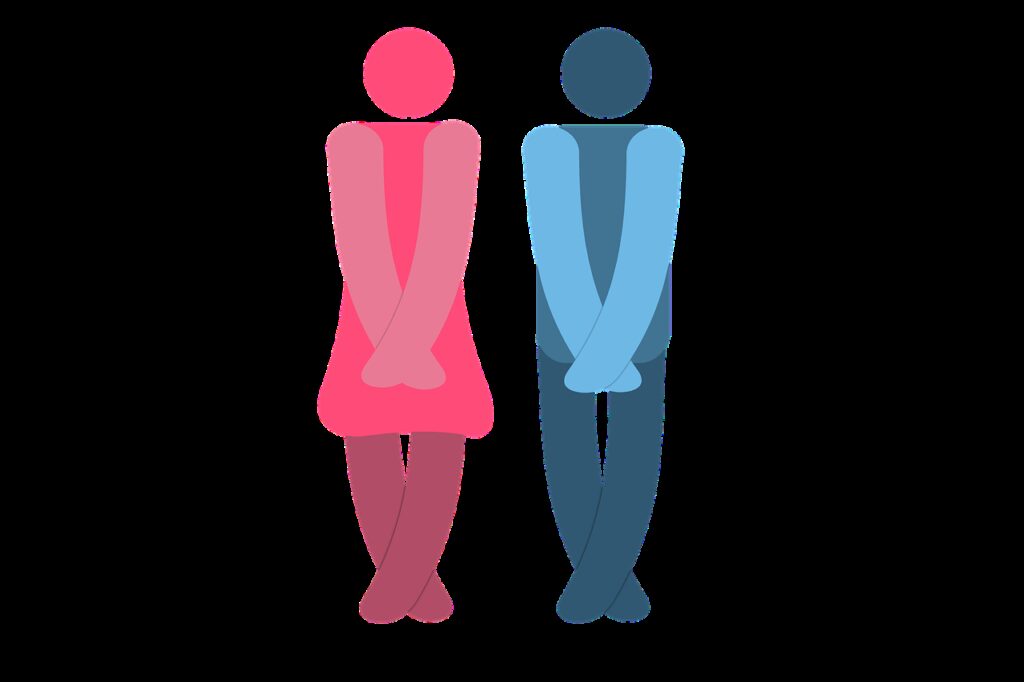Pelvic floor physiotherapy for men is an integral part of managing male urinary and reproductive challenges. The pelvic region houses the urinary, reproductive, and bowel systems.
Physiotherapy for men plays a critical role in maintaining functional strength within this system.
The health of the pelvic floor often goes unnoticed until it starts to cause significant problems. This is because it’s composed of soft tissue that lies below the surface of the skin—making it difficult to assess.
As such, few people know what a strong pelvic floor looks or feels like. But if you experience any of these signs, chances are you need some extra help.
Incontinence
If you’re experiencing a lack of bladder control, it’s likely a pelvic floor issue is causing it. This may be due to damage to the nerves in your pelvic floor, or poor pelvic floor strength.
If you’re suffering from urinary incontinence, you’re unable to control your bladder and bladder capacity. This means you may leak urine at random times and places, such as when you laugh, cough, sneeze, or exercise.
If you have a low urge to urinate, you may not even know you’re doing it. This can mean you have no idea when you’ve wet yourself. You might also have accidents in places where they’ll be obvious to others, like your home or car.

Difficulty with erection and ejaculation
Weak pelvic floor muscles can also cause erectile dysfunction (ED). This is when a man has difficulty getting an erection or staying erect during intercourse.
It can also cause men to have difficulty ejaculating, resulting in a low volume of semen and problem with men’s health. This may occur without warning. If you’re experiencing ED, it’s likely a pelvic floor problem is causing it.
This may be due to damage to the nerves in your pelvic floor, or a weak pelvic floor strength. ED may also be a sign of other health problems, including diabetes, high blood pressure, or a psychological disorder.
If you’ve been experiencing ED for a long time, talk to your doctor about any other health issues you’re concerned about.
Weak pelvic muscles
Weak pelvic floor muscles can make you prone to urinary incontinence—and also cause other health problems. For example, weak pelvic floor muscles are common in overactive bladder.
This means you have an urgent urge to urinate, even though you may not have actually voided. This can make it difficult to sleep, cause stress, and negatively impact your health.
Other problems caused by pelvic floor weakness include chronic pain in the pubic area, sexual dysfunction, and low back pain.
Pelvic floor weakness is also a sign of many other illnesses, including endocrine disorders, neurological disorders, and pelvic organ prolapse.
Weak core muscles for men
Having weak core muscles means you’re more prone to low back pain. Weak core muscles may also cause you to have difficulty maintaining an erect posture, which puts you at risk of developing back pain.
Low back pain is a common health problem, and it’s often caused by core muscle weakness. Weak core muscles in your abdomen and lower back can cause low back pain.
This pain is caused by an abnormal nerve signal that tries to protect your back by making you feel like you’re doing something bad.
What Is the Pelvic Floor?
The pelvic floor is the muscular system that supports the pelvic organs—including the bladder, uterus, rectum, and prostate. It’s different from the core muscles in your abdomen, which support your spine.
The pelvic floor is composed of three layers of muscles: the anal sphincter, the pubococcygeus (PC) muscle, and the MYO (myos muscle). The anal sphincter keeps feces in the colon, and the PC muscle helps control urination.

Types of Pelvic Floor Physiotherapy For Men
Pelvic floor physiotherapy for men is a medical treatment that seeks to restore and build up the strength of the pelvic floor. There are a number of different types of pelvic floor physiotherapy.
Functional treatment aims to improve the strength of the pelvic floor muscles through specific exercises. This is the most common type of pelvic floor therapy—and the one recommended by health professionals.
Restorative treatment attempts to identify which of the pelvic floor muscles are weak, then treats those muscles with specific, gentle therapies. This is often recommended by physicians and therapists who specialize in women’s health.
Interesting resource about pelvic floor physiotherapy How Does Pelvic Floor Physiotherapy Work?
How to Treat Incontinence in Men?
If you have incontinence, you’ll need to engage in regular pelvic floor exercises to strengthen your pelvic floor muscles.
These Kegel exercises should be done daily, ideally in the morning, before you sit down to do anything else. They should be held for at least 30 seconds.
To do them, lie down on your back, place your legs in the air, and then tighten your pelvic floor muscles as if you’re trying to stop urinating.
Repeat the procedure three times and then relax your pelvic floor muscles before switching to the other side. Consult a specialized physiotherapist if you need help with physiotherapy for men.

How to Strengthen Erectile Dysfunction in Men?
If you have erectile dysfunction, you’ll need to engage in regular pelvic floor exercises to strengthen your pelvic floor muscles.
These exercises should be done daily and should be done with the help of physiotherapist for men, ideally in the morning, before you sit down to do anything else.
They should be held for at least 30 seconds. To do them, lie down on your back, place your legs in the air, and then tighten your pelvic floor muscles as if you’re trying to stop urinating.
Repeat the procedure three times and then relax your pelvic floor muscles before switching to the other side. If you’ve been diagnosed with ED, you may also want to consider prescription medication.
Talk to your doctor about what options are available to help you regain control.
Conclusion
The pelvic floor supports your pelvic organs, including your bladder, uterus, and prostate. If it’s weak, you might experience urinary and/or incontinence problems.
The pelvic floor also helps with orgasms and ejaculation. If it’s weak, you might experience a low amount of semen or even pain during intercourse.
Pelvic floor physiotherapy for men’s is an important part of everyday health. It can help restore and strengthen the strength of the pelvic floor. Now, you just need to know where to find it.
